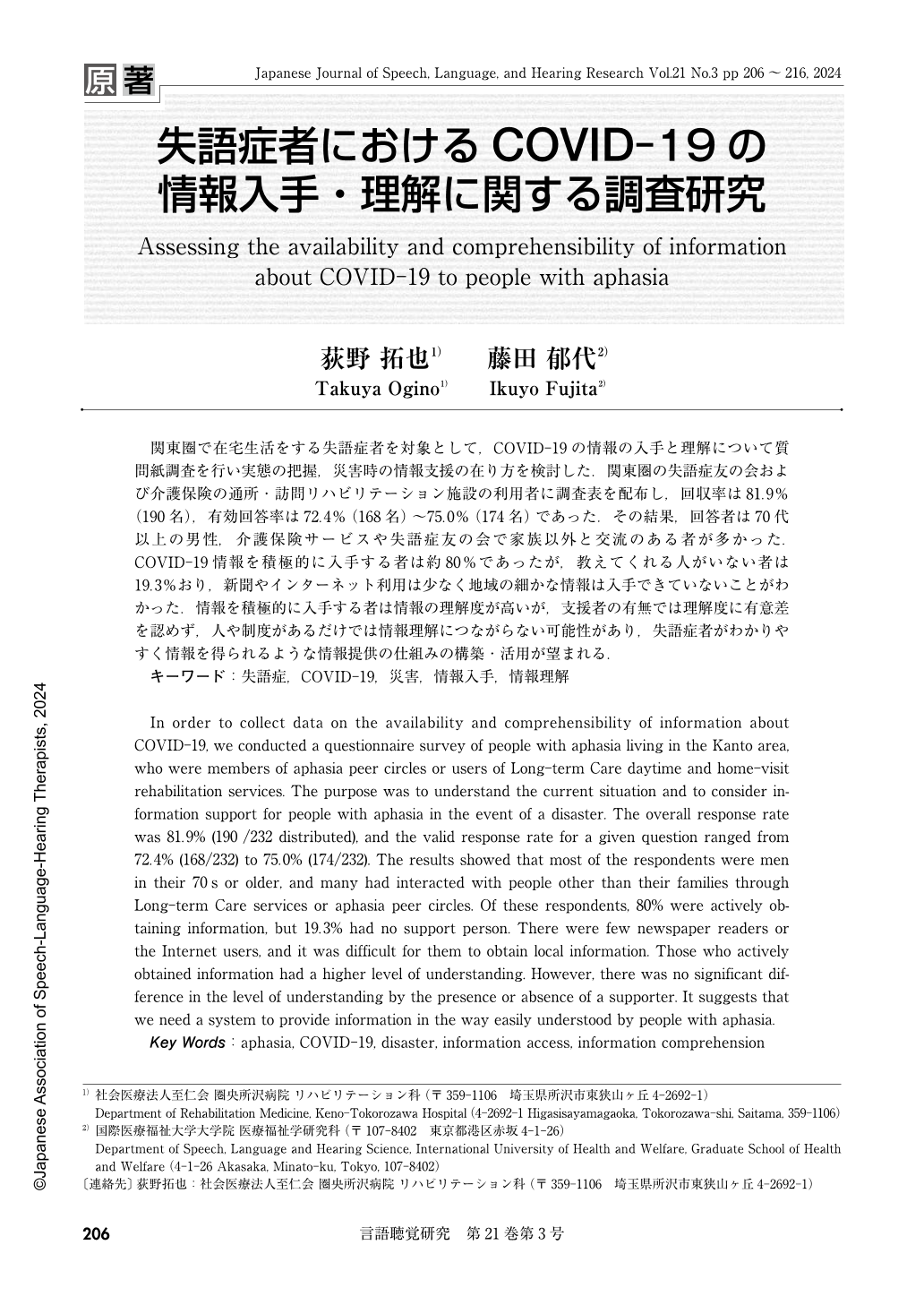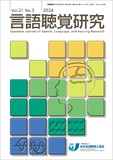Japanese
English
- 有料閲覧
- Abstract 文献概要
- 1ページ目 Look Inside
- 参考文献 Reference
関東圏で在宅生活をする失語症者を対象として,COVID-19の情報の入手と理解について質問紙調査を行い実態の把握,災害時の情報支援の在り方を検討した.関東圏の失語症友の会および介護保険の通所・訪問リハビリテーション施設の利用者に調査表を配布し,回収率は81.9%(190名),有効回答率は72.4%(168名)〜75.0%(174名)であった.その結果,回答者は70代以上の男性,介護保険サービスや失語症友の会で家族以外と交流のある者が多かった.COVID-19情報を積極的に入手する者は約80%であったが,教えてくれる人がいない者は19.3%おり,新聞やインターネット利用は少なく地域の細かな情報は入手できていないことがわかった.情報を積極的に入手する者は情報の理解度が高いが,支援者の有無では理解度に有意差を認めず,人や制度があるだけでは情報理解につながらない可能性があり,失語症者がわかりやすく情報を得られるような情報提供の仕組みの構築・活用が望まれる.
In order to collect data on the availability and comprehensibility of information about COVID-19, we conducted a questionnaire survey of people with aphasia living in the Kanto area, who were members of aphasia peer circles or users of Long-term Care daytime and home-visit rehabilitation services. The purpose was to understand the current situation and to consider information support for people with aphasia in the event of a disaster. The overall response rate was 81.9% (190 /232 distributed), and the valid response rate for a given question ranged from 72.4% (168/232) to 75.0% (174/232). The results showed that most of the respondents were men in their 70s or older, and many had interacted with people other than their families through Long-term Care services or aphasia peer circles. Of these respondents, 80% were actively obtaining information, but 19.3% had no support person. There were few newspaper readers or the Internet users, and it was difficult for them to obtain local information. Those who actively obtained information had a higher level of understanding. However, there was no significant difference in the level of understanding by the presence or absence of a supporter. It suggests that we need a system to provide information in the way easily understood by people with aphasia.

Copyright © 2024, Japanese Association of Speech-Language-Hearing Therapists. All rights reserved.


